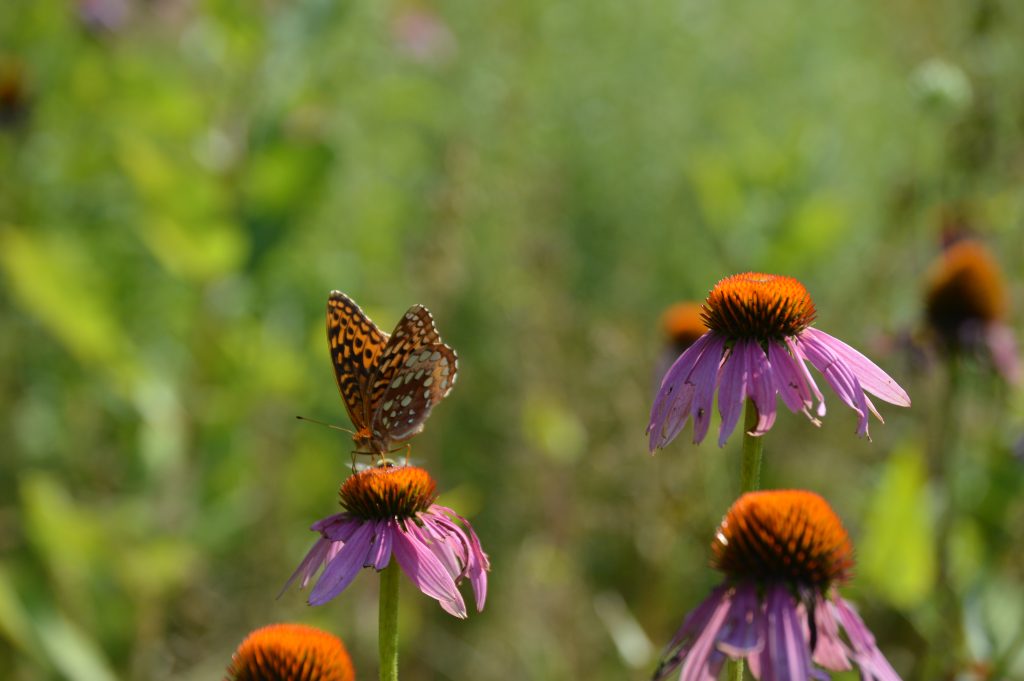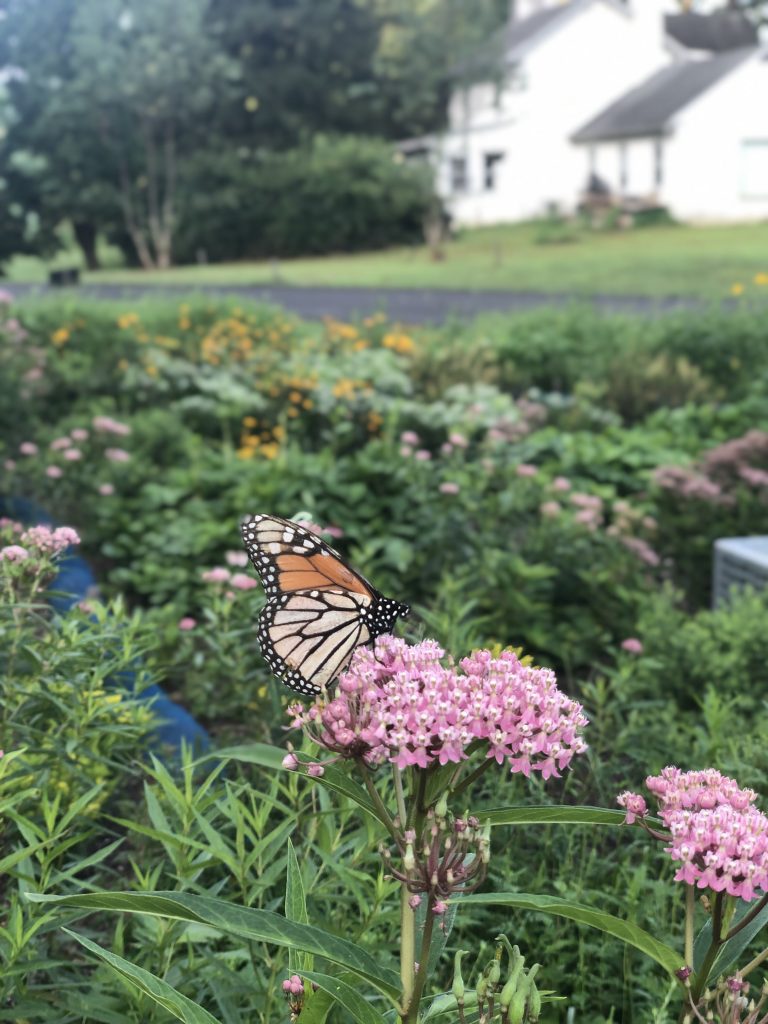It is that time of year again – Plastic Free July! In case you missed our previous blog posts on this topic, you can see them here!
We recognize that trying to reduce our plastic consumption during this period in history is tough – Americans are producing 30% more trash this year than the same period last year, and it seems like everything at the grocery store is wrapped in additional layers of plastic. There is growing concern that the increase in plastic consumption is translating to a rise in plastic litter, particularly in single use masks and gloves being discarded in parking lots. This leads to the question:
What can be done about the litter?
If you are interested in picking up litter along a stream bank, road, or around your neighborhood, there are some precautions you need to take to be sure that litter is the only thing you are picking up.
1) Practice social distancing. If you are participating in a clean-up effort with people outside of your immediate family bubble, than be sure to remain at least six feet apart. If you are going to be in an area that has potential hazards, like along a waterway, be sure that you do go with a partner and stay safe six feet apart!
2) Wear bright colors. Florescent colors and reflectors will help people to see you doing the important work of cleaning up litter, especially near high risk areas like roads. If you have extra gloves, you can invite them to join you in your efforts!
3) Wear a mask. If you are in an area where other people might be around, please wear a mask.
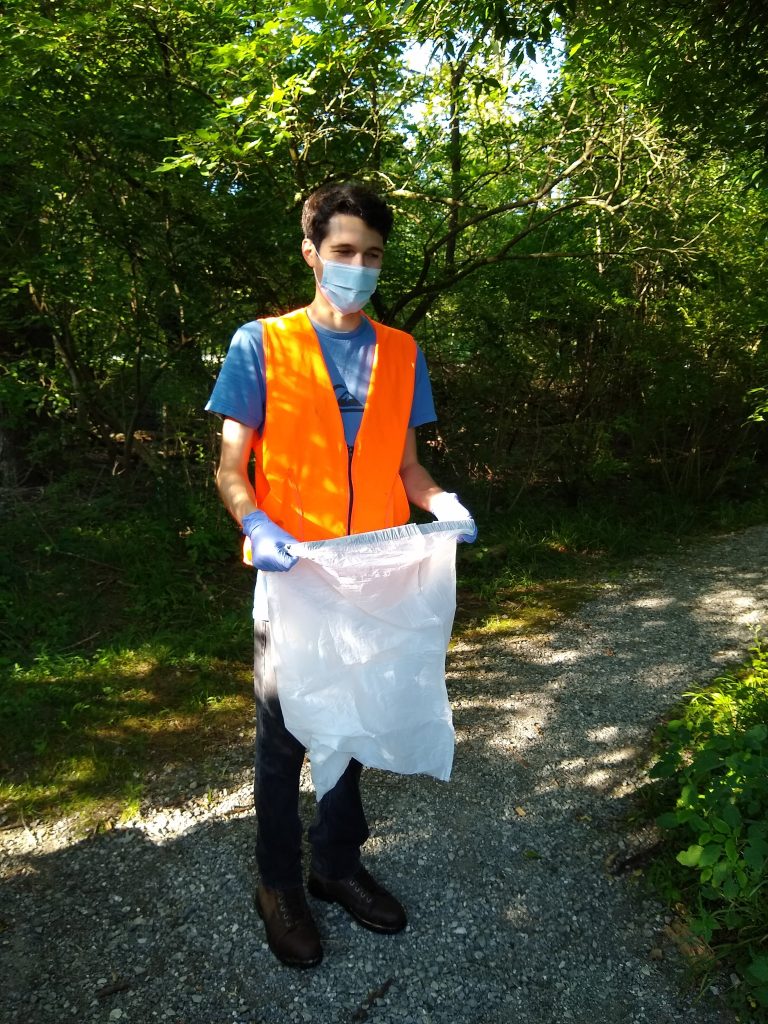
4) Wear gloves. You should always wear gloves when picking up litter! A pair of disposable nitrile gloves ensures that anything that is transferred from the litter does not collect on your skin. Be sure to practice good glove etiquette and DO NOT TOUCH your face, clothes, exposed skin or water bottle with gloves that have been in contact with unknown litter (here is guide for teaching good glove technique!). It is very important that your gloves are non-permeable and disposable – unfortunately it means generating some waste in order to help reduce waste in our environment. Your personal safety is the most important thing!
5) Use trash pickers. If you have access to an extended grabber/reaching tool (like this one), you can use this to pick up garbage and reduce the contact with the potentially contaminated trash. We purchased the grabbers that we are using at the Trust from the Dollar store. Be sure to sanitize your grabber after using it with hot soapy water or Clorox wipes.
6) Keep an eye on your surroundings. While you are out cleaning up litter, stay alert and pay attention to your surroundings. This will keep you safe and you may notice beautiful details in your environment, like chicory or other native flowering plants.
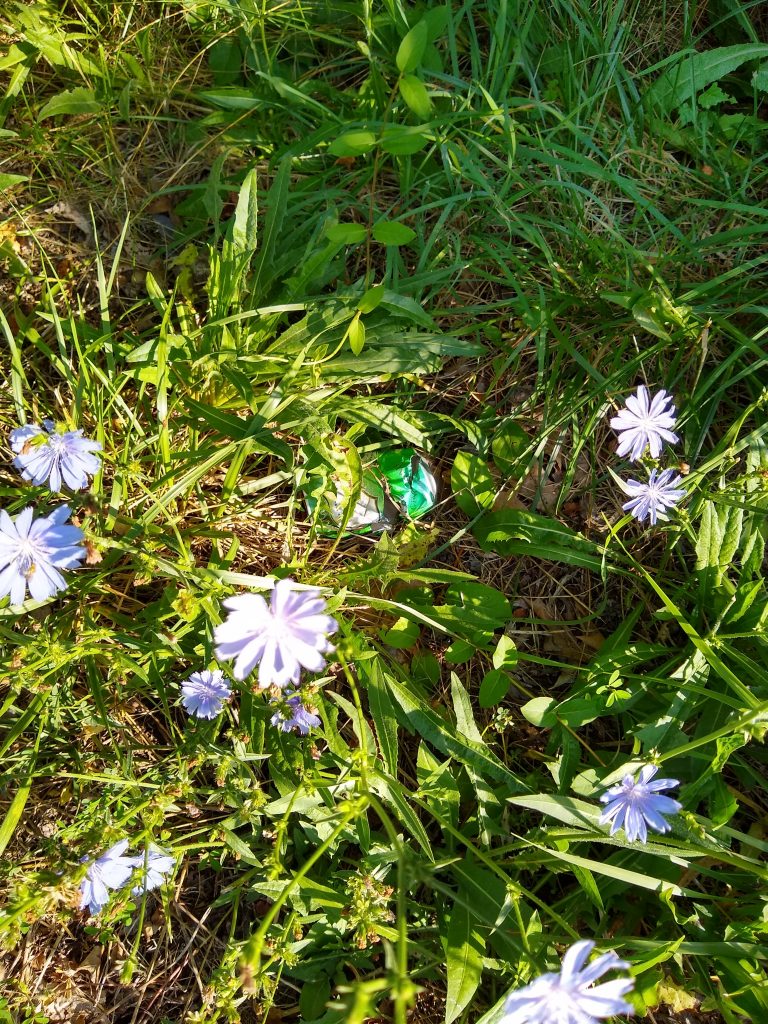
7) Wash your hands. As soon as your gloves come off and are properly disposed of in your garbage bag, use hand sanitizer or wash your hands in hot, soapy water.
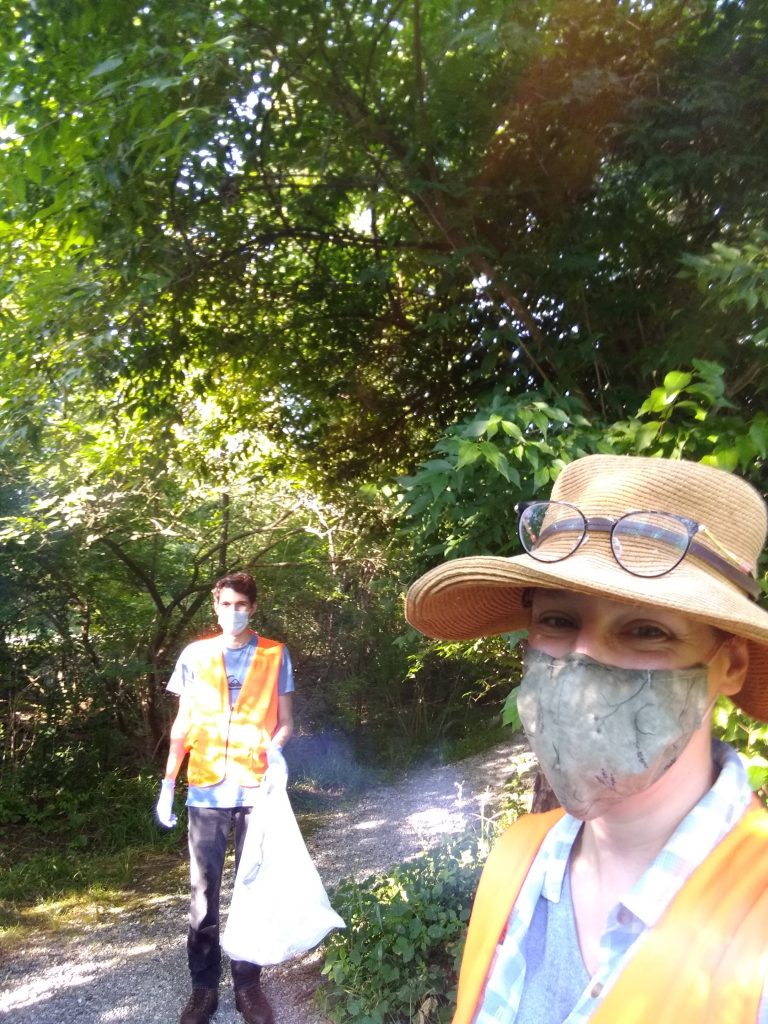
8) Properly dispose of your collected litter. Check with your local municipality’s recycling and hazardous waste ordinances.
9) Celebrate your efforts! Every clean-up effort should be celebrated with pictures, a hearty snack and a delicious cold drink to rehydrate after working hard in the July weather!
As always, when you are in the outdoors, remember to check the weather for any rain or excessive heat warning and plan accordingly (you might want to plan on going out in the cooler mornings or evenings), be mindful of boundaries and do not trespass, and drink plenty of water!
Have you picked up garbage during the pandemic? Send your pictures and tips to land@wctrust.org.

